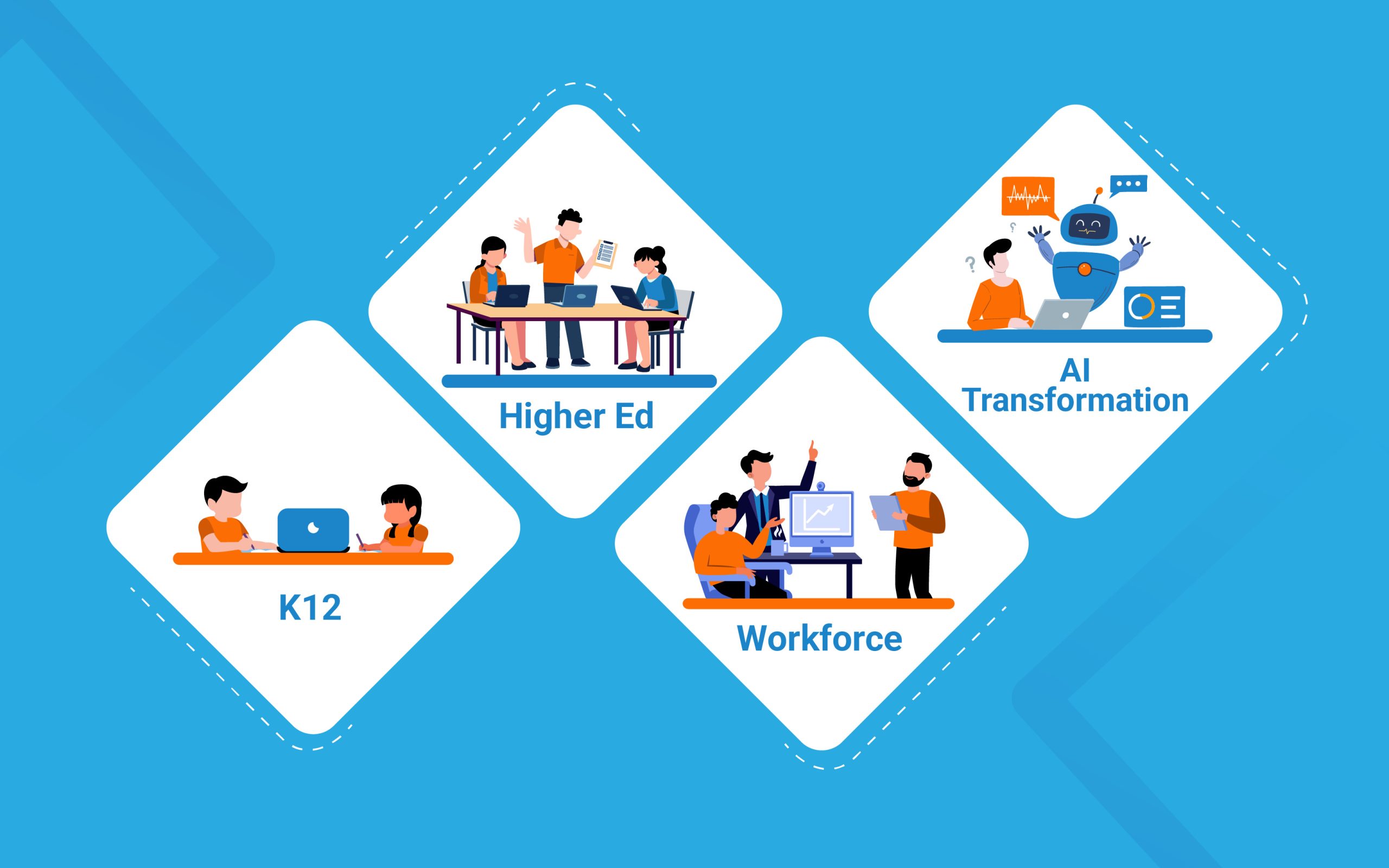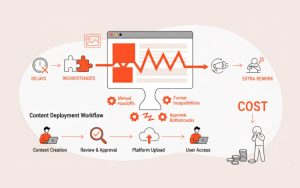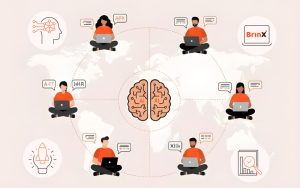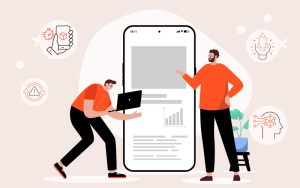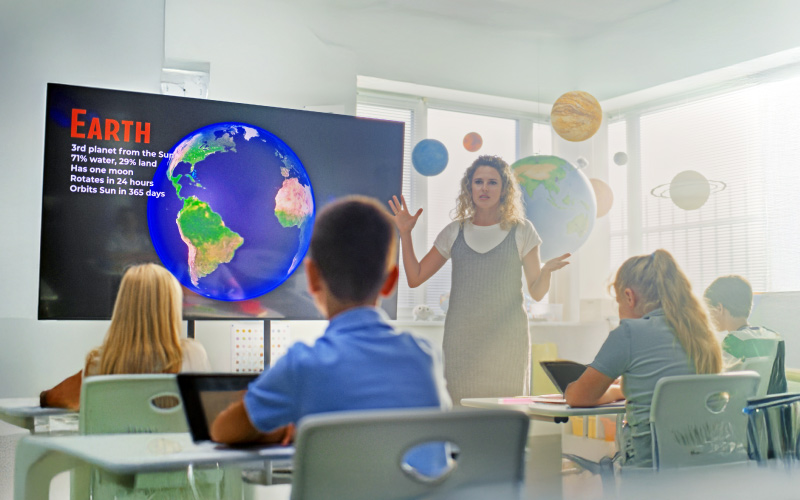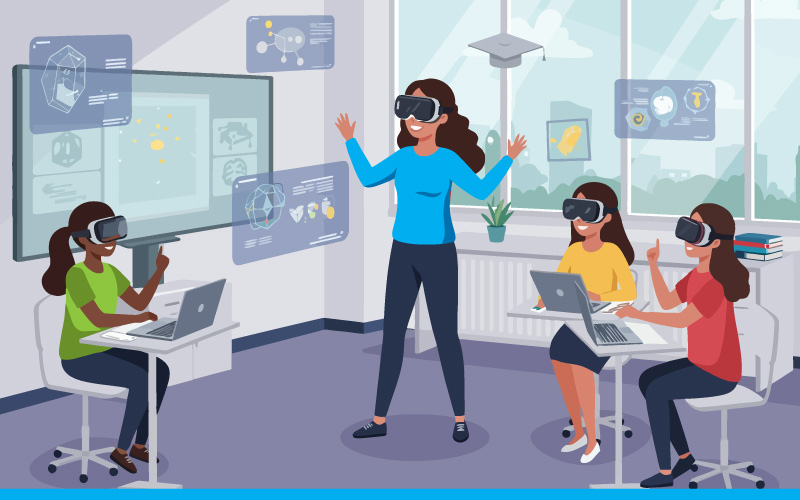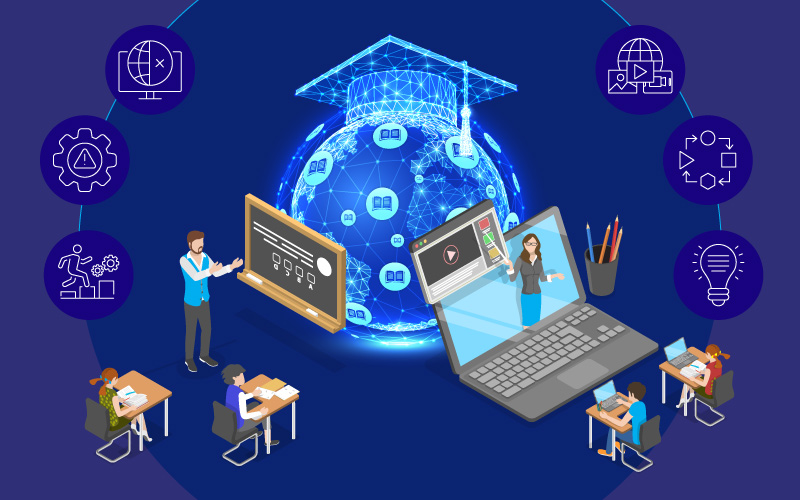
Why Lifelong Learning Needs a Connected Approach
At MITR Learning & Media, we’ve witnessed something consistent across classrooms, campuses, and workplaces. People learn in stages. Not in isolated moments. Not through a single course or a one-time intervention. Learning grows the way people do. Gradually. Unexpectedly. And then, with purpose, once the right support is in place.
Most systems tend to treat these stages like disconnected arenas. A child learning foundational skills. A student is building academic depth. An employee is trying to stay current. Yet each stage influences the next, and the space between them is where many learners lose momentum.
Our role as a parent company is to close those gaps. We create a connected, lifelong learning ecosystem where every stage reinforces the next. It’s sustainable. It’s skill-first. And it’s built for the way people actually grow.

Why Lifelong Learning Needs an Ecosystem Approach
Learners today navigate constant skill shifts, evolving expectations, and new formats of work and study. They need continuity. They need learning that adapts as quickly as their world does. They need formats that fit how they actually consume information. And they need pathways that adjust in real time.
An ecosystem approach solves several common challenges:
-
Fragmented stages. Early learning, academic preparation, and on-the-job capability building often operate separately.
-
Uniform content for diverse learners. Many learning journeys ignore individual goals and pace.
-
Slow production cycles. The pace at which new abilities are developed frequently outpaces that of content creation.
Our ecosystem is built to keep individuals moving ahead, decrease friction, and boost relevance.

How MITR Learning & Media Builds a Lifelong Learning Ecosystem
We support learning from the earliest foundations through career advancement. While each component of the ecosystem has a unique function, they all work toward the same goal: keeping people prepared for whatever lies ahead.
K12: Setting the Foundation
Early learning shapes how students think, communicate, and process information. Our work in K12 focuses on helping schools deliver engaging, scaffolded content using approaches grounded in learning science. Visual storytelling, thoughtful sequencing, and strategies like Dual Coding help ideas land and stay with learners.
Higher Education: Connecting Knowledge and Real-World Application
As students enter higher education, they are developing their identities, goals, and aspirations for their careers. MITR Learning & Media partners with institutions to deliver experiences that strengthen academic understanding while building future-ready skills. That means multimedia learning, skill pathways, and active learning that prepares students for the complexity of modern careers.
Workforce Learning: Capability Building with Upside Learning and mynd
Skill needs evolve quickly inside organizations, and teams can’t afford to fall behind. Upside Learning and mynd strengthen this part of the ecosystem by helping employers build capabilities that are not only relevant today but resilient enough for the shifts ahead.
Both teams combine strategy, creativity, and learning science to create experiences that lead to real behavior change. Instructional design sits at the core. While Bloom’s Taxonomy guides outcomes that advance learners from fundamental comprehension to applied mastery, frameworks like ADDIE and SAM provide clarity and structure to the build process.
But the impact doesn’t come from the structure alone. It stems from knowing how the brain functions.
To make difficult concepts easier for students to understand without being overwhelmed, we employ the Cognitive Load Theory. Dual Coding reinforces what students read and hear by providing them with relevant pictures. Spaced repetition and retrieval practice aid in the retention of information long after a module concludes.
Upside Learning’s digital learning solutions lean heavily on these principles. The team blends scenario-based learning, simulations, branching pathways, and microlearning, so employees learn by doing and by reflecting, two ingredients that make behavior change more likely. They also build performance support tools that show up at moments when employees actually need them, not weeks before or after.
mynd brings in the power of narrative and visual design. Excellent animation, narrative, and high-end video provide abstract talents emotional weight and practical relevance. Whether it’s communication strategies, safety protocols, or leadership traits, stories help students relate to the content more easily. These transforms learning from a task that employees must accomplish into something that seems immediately applicable to their job.
Together, Upside Learning and mynd approach capability building as a long-term arc, supported by measurement. Kirkpatrick-inspired models are used to monitor behavior, learning, reaction, and business repercussions. Companies are able to assess what works, where there are still gaps, and how to keep getting better every year.
This is how workforce learning becomes more than content delivery. It becomes a continuous, science-backed system that helps people grow with confidence and helps organizations stay ready for what comes next.
BrinX.ai: Turning Content into Learning at Speed
The pace of change means teams need faster ways to convert raw content into impactful learning. BrinX.ai automates and accelerates this process, producing multimedia assets such as micro–videos, explainers, simulations, and modular courses. The end product is high-quality, flexible learning that puts businesses ahead of the curve.
Together, these elements create a learning ecosystem that remains adaptable, scalable, and responsive.

Analytics-Backed Pathways Guide Learners Through Every Stage
Although choice can empower learners, it can sometimes be too much for them. With data, we can create clear, relevant paths that adjust to each learner’s needs, performance, and objectives. Instead of static progressions, pathways evolve. They highlight strengths. They reinforce gaps. They suggest the next steps at the right moment.
This creates a sense of direction and a smoother journey across stages.

Diverse Content Formats Make Learning Sustainable
Learning doesn’t look the same every day. Some days call for deep study. Others are better suited for a quick podcast or a short video. Our ecosystem embraces that reality.
We support:
-
Podcasts
-
Courses
-
Microlearning
-
Immersive media
-
Short-form video
-
Visual explainers
-
Simulations
This variety helps reduce cognitive load and keeps learners engaged over long periods.

What This Ecosystem Unlocks for Learners and Organizations
A lifelong learning ecosystem reshapes the entire development arc:
-
Learners build relevant skills early and keep refining them.
-
Students approach careers with clarity and confidence.
-
Employees develop consistently, not sporadically.
-
Organizations stay aligned with changing capability needs.
-
Learning becomes a continuous rhythm rather than a series of one-off events.
Every stage advances the same mission: helping people learn, grow, and move forward.

Bringing the Learning Journey Together
Lifelong learning grows stronger when every stage supports the one that follows. When early foundations connect with academic depth. When academic learning flows naturally into workplace capability building. When workplace skills continue to evolve through guidance, feedback, and timely support.
MITR Learning & Media’s ecosystem is built around that continuity. K12 sets the base. HigherEd shapes direction and confidence. Workforce learning strengthens real-world capability. And BrinX.ai ensures organizations can keep pace by transforming content into engaging, multimedia learning at speed.
Analytics guide each step, so learners always know where they’re headed next. Diverse formats make learning feel doable on busy days and inspiring on curious ones. Additionally, every experience is based on how individuals really take in, apply, and retain knowledge thanks to science-backed design.
The result is a seamless arc of growth that helps learners stay ready for whatever comes next and helps organizations build skills that last beyond a single program or year.
If you’d like to explore how MITR Learning & Media can support your learning initiatives across any stage, reach out. We’d be glad to connect and help you shape the next step in your learning journey.
FAQ's
Why is accessibility essential to STEM education for students with special needs?
Accessibility to STEM eLearning means that all students (of both genders and with special needs) get to be partakers of learning programs. It's a step towards eliminating educational inequalities and fostering multiverse innovation.
In STEM education, what are some common problems encountered by students with special needs?
Some common issues are course format that is not complex, non-adapted labs and visuals, insufficient assistive technologies, and no customized learning resources. Besides this, systemic issues such as learning materials that are not inclusive, and teachers who are not trained.
How can accessibility be improved in STEM eLearning through Universal Design for Learning (UDL)?
Through flexible teaching and assessment methods, UDL improves accessibility in STEM content. Also, UDL allows learners to access and engage content in multiple ways and demonstrate understanding of content.
What are effective multisensory learning strategies for accessible STEM education?
Examples of multisensory learning strategies in accessible STEM include when students use graphs with alt-text, auditory descriptions of course materials, tactile models for visual learners through touch, captioned videos for auditory learners, and interactive simulations to allow boys and girls choice in how they have access to physical, visual, auditory, video and written content representation.
Identify the assistive technologies required for providing accessible STEM material?
In order to provide access to STEM material, technologies like screen readers, specially designed input app for mathematics, braille displays, accessible graphing calculators are required.
How can STEM educators approach designing assessments for students with special needs?
To create content for students with special needs, tactics such as creating adaptive learning pathways in more than one format, oral and project assessments and multiway feedback will prove to be beneficial.
What is the role of schools and policymakers in supporting accessible STEM education?
Educational institutions should focus on educating trainers and support staff, also they can invest in assistive technology, and work towards curricular policies.
Can you share examples of successful accessible STEM education initiatives?
Initiatives like PhET Interactive Simulations, Khan Academy accessible learning resources, Labster virtual laboratory simulations, and Girls Who Code’s outreach are examples of effective practice.
How can Mitr Media assist in creating accessible STEM educational content?
Mitr Media is focused on designing and building inclusive e-learning platforms and multimedia materials with accessibility standards in mind so that STEM material is usable by all learners at different levels of need.
What value does partner with Mitr Media bring to institutions aiming for inclusive STEM education?
Mitr Media has expertise in implementing assistive technology, enacting Universal Design for Learning, and providing ongoing support to transformation organizations, enabling their STEM curriculum into an accessible and interesting learning experience.


